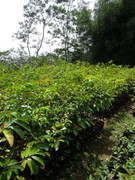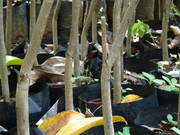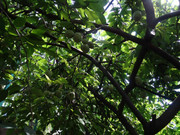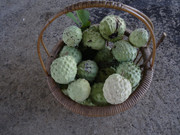Thanks to all for your views!
some of the pioneering species mentioned like A magnum/Parkia b. are not available here
It remains to be seen if the tree will stop resprouting after multiple whackings, but I'm guessing it won't be easy. So, I would proceed cautiously.
That is definitely what i feel too...it would be tempting to plant quite a few around since it is so biomass effective but i don't want to end up with a gliricidia jungle

Leucaena is a serious pest here and the seeds last 15 years in the soil.They are small in dry areas but big in wet tropical climates.
same here it is actually naturalized on my plot and i am struggling to get rid of it, or rather to control it. It is a very tough one most difficult one to get uprooted

Cajanus is perennial. Grows for about 3 years before falling over. Great tree for chop and drop. Just finished chopping mine yesterday. The areas with pigeon pea look to have much better dirt than elsewhere. Can harbour wood borers and pod suckers in plague proportions, so just make sure these aren't a problem in your area or you aren't growing things likely to be effected (other soft wooded tree crops or lots of peas and beans)...
you are right Bruce it does last for several years here too. And i also noticed pests like it pretty much. I am not growing peas or beans but i do have a fews annonas in the orchards that are sensitive to wood borers. Then have to see whether they are the same types of borers or not.
Hi Samuel, your plot looks like a challenge but I think your soil building approach is a good one. Do you have a source of seaweed? Shredded coconut husks would be great as well. In my experience, you can kill most invasive stumps by burning them out with a small fire on top of the stump and letting the coals burn down into the root system. Best, Dave
no source for seaweed around, coconut husks can get plenty of it but then have to work out the shredding process...about fire on the plot i would prefer to avoid since it can end up spreading all over if not managed correctly. It already happened 2 years ago while a friend of mine was doing a bit of clearing, fire spread to the neighbor's sugar cane field then firemen came to stop it

Maybe salt could be an alternative? i heard about people of killing established tree stump by drilling holes and pouring salt in them.
If erosion is a problem, (it looks like there are some pretty steep slopes) clumping bamboos planted on contours, help conserve moisture and make lots of organic matter.
indeed it is a rather sloppy land. That's why we have arranged some terraces with the excavator to prevent erosion and allow a better soil build up.
the plot before terracing
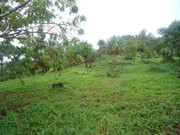
moving rocks, uprooting invasive trees stump and working some terraces with the excavator

nice_black_soil in the lower part of the plot
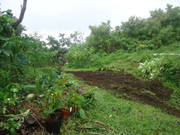
our first planted gliricidia about 18 months ago, have largely overgrown the biribas. Soil pretty tough at this spot
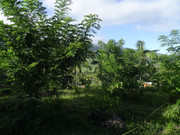
Soil from outside we use to fill in back the plantation holes dug by the excavator. Mixed together with some composted manure and/or sugar cane filter press mud
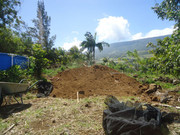
a cherimoya about 6 months after plantation
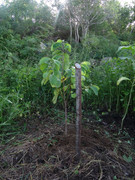
one terrace planted with about 10 fruit trees a year ago among which one sapodilla, 2 carambola, 1macadamia, 1 jaboticaba, one mango and few others...

same spot a year later with Sweet potato used as a ground cover seems to be an interesting option since it is pretty much competitive with the weeds
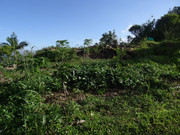


 i might not be fruiting those myself since i live and farm on the coast but some fellows living at high altitudes would like to give those a try...
i might not be fruiting those myself since i live and farm on the coast but some fellows living at high altitudes would like to give those a try...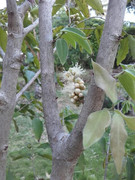
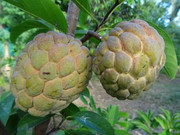


 . Even though it may not compete with all the top notch cultivars you guys are familiar with i.e. Pink mammoth, Geffner, African pride, Kj Pinks and so on. These will come soon hopefully- your contributions are most welcome
. Even though it may not compete with all the top notch cultivars you guys are familiar with i.e. Pink mammoth, Geffner, African pride, Kj Pinks and so on. These will come soon hopefully- your contributions are most welcome 